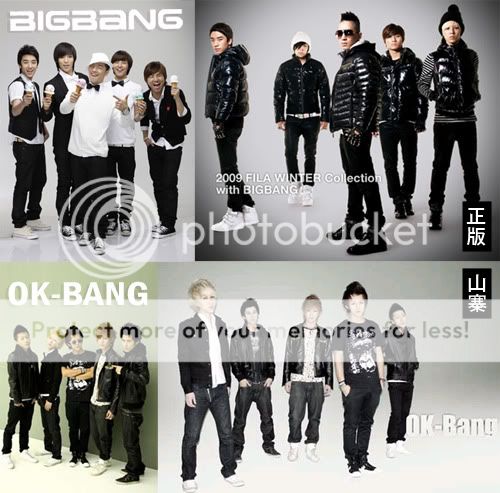K-pop. It’s now a word that has spread around the globe. It is an industry that jumped to a worth of over billions of dollars in less than a few decades. Due to it’s sudden growth, the k-pop industry was given a new nickname: ‘Hallyu’, derived from the word ‘Hollywood’. It simply means that the Korean industry is the Hollywood of Asia. You may be asking, how is this possible? How did the Korean entertainment industry get so popular in such a limited time?
The spread of Korean media around the world started with dramas. The interesting, well-made, and somewhat confusing plots of K-drama’s bring in lots of attention, especially from other Asian people. Korean dramas are made so Asians can relate to it. There is a consistent theme that revolves around Confucianism in basically every k-drama, because the impact of Confucianism is so strong on the culture. Since every Asian country has at least some Confucianism view points, many Asians can relate and understand the dramas, which is one of the reasons for the popularity of k-dramas. However, the real gems are the actors and the actresses. Interestingly, Korean celebrities have an appearance that can appeal nearly anyone in the world (Plastic surgery? I don’t know). Combine the mind boggling plots of these dramas with actors and actresses who all look like Ken and Barbie and you got yourself a growing industry.
The emergence of idol singing groups is where the k-pop industry really begins to explode. In the late 20th century, idol groups had been the trend in Korea for a few years, with groups such as Seo Tae Ji and the Boys, H.O.T, Sechs Kies, S.E.S, Baby VOX, and Shinhwa, among others. However, the k-pop industry back then was not notable outside of Korea. The idol trend cooled down for a few years, and the k-pop industry was slowly spreading – first around Asia – with the influence of actors and solo singers such as Rain and BoA. Thanks to their help, the returning idol trend in the new millennium proved to be a great success. However, there are now too many of these groups floating around, and only a handful of them actually succeed. All of these groups have appeal, most of these groups have spectacular singing and dancing skills, so what puts some of them on top of all the others? There are two things that come to my mind: a big, notable label company, or a repetitive, catchy song. In Korea, there are three music label companies that are judged above all else. They are SM Entertainment, JYP Entertainment, and YG Entertainment, sometimes referred to as ‘The Holy Trinity’. These companies have produced many idol groups, and most of their groups had succeeded in the industry. The success of the groups from these three labels can not be compared to most other groups that are managed under less-notable companies. The names of these three companies itself is already huge marketing, and if a group can sing and dance, they will almost be guaranteed a place in the industry. The second must is a repetitive, catchy song. K-pop music, with the majority being idol music, is very repetitive. Repetitive enough to be stuck in your mind for a whole week. Repetitive enough for you to dance to it’s choreography whenever you get the chance. This is also a main factor for the success of idol groups, as these repetitive songs will get them stuck on your mind. Take a listen to an example below. The song is called ‘Gee’ by girl group Girls Generation.
So how many times did you hear the word ‘Gee’ in there? Too many to count, right? The word was repeated 46 times in those three minutes. Most successful idol groups have similar repetitive songs such as ‘Gee’, and after watching that video, it’ll be quite obvious on why they release these type of songs.
With such popularity in their home land, the K-pop industry needed somewhere to expand to. The first stop for the industry was in Asia, specifically Japan and China. If the Korean entertainment industry could influence the two most notable Asian countries, it would naturally spread to all other parts of the Asian continent. And it did.
Let’s first talk about it’s spread in Japan. First of all, k-dramas was the reason for Japan turning its attention to the Korean industry. The 2006 drama, ‘Winter Sonata’, was a huge hit in the country, making actor Bae Yong Joon a Japanese superstar. After the success of this drama, Korean music started becoming influential in Japan. Japan was a critical target for the Korean music industry, not only because it was a notable Asian country, but because it’s music industry was the second largest in the world, only after America. Singers in Korea wished to release their music in a bigger industry, while at the same time expanding and advertising their own. This resulted in a win-win situation for many, as singers accumulated higher album sales, while increasing their international popularity as well. Korean singers such as BoA, TVXQ, BIGBANG, KARA, Girls Generation, FT Island, B2ST, and 2PM have all broken records in the Japanese music industry, and have risen to the top of charts, beating out many top Japanese singers. KARA, for one, had greater success then they had in Korea, accumulating nearly ten times the album sales that they have sold in Korea. Even now, more and more singers are breaking into the Japanese industry, and are met with great success. Some, like KARA, even achieve greater popularity then in Korea.
The influence of Korean entertainment also started with dramas in China, then gradually expanded to the music industry as well. Although China’s music industry is smaller then Korea’s, influencing the vast area helped in spreading the K-pop movement. Like Japan, Korean singers have immense popularity in China, and have surpassed Chinese bands in terms of popularity. Since the emergence of Korean bands, most notably Super Junior, in the Chinese industry, local singers have had trouble catching up to the popularity of these foreign singers. Chinese bands thus started to copy Korean singers in music style, fashion, and even name. A Chinese singing group, OK-BANG, was heavily criticized for basically plagiarizing Korean idol group BIG BANG in every possible way. Although it is obvious that such gimmicks would never work, it proved the influence of Korean music in the Chinese industry.
Other than getting popular and increasing sales, the spread of Korean singers and actors internationally has had a huge positive effect on the country itself. Korea, having little land, does not have many natural resources to export. The most notable industry in Korea is technology: producing cars, electronic appliances, ships, tunnels, etc. The international spread of the entertainment industry will make it bigger, thus, Korea will have another industry to rely on for the lack of natural resources. In 2009, the Korean entertainment industry exported more than $3 billion US dollars, and with the industry growing year by year, that number would have risen again. Another positive effect for the country is the improved relations between countries such as Japan and China. By connecting people through dramas and music, the tension that these people have with each other will decrease. For example, several Korean celebrities donated to Japan after their critical earthquake. Due to their kind deeds, many Japanese, who may have had a previous disliking towards Koreans, acknowledged the celebrities and respected what they had done for their country.
_______________________
About the Author
This submitted article was produced by https://splashmans.wikispaces.com.































